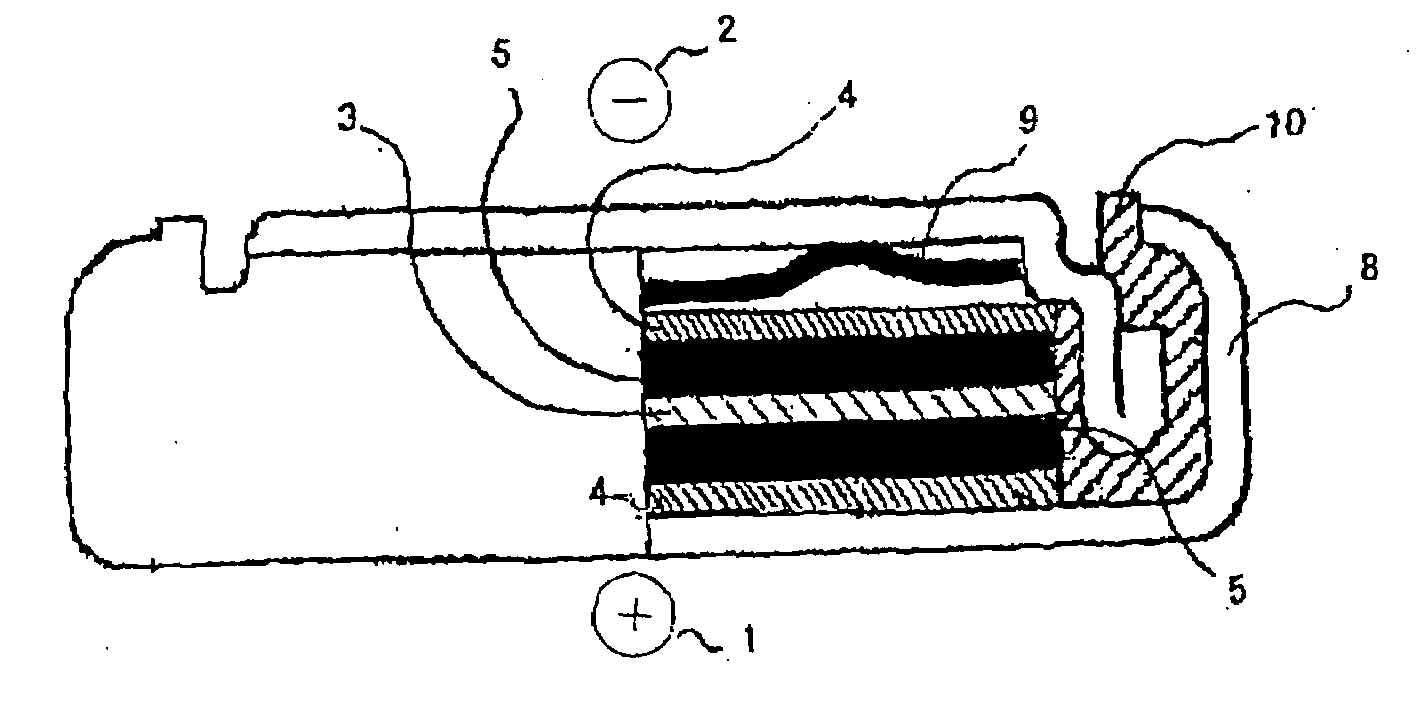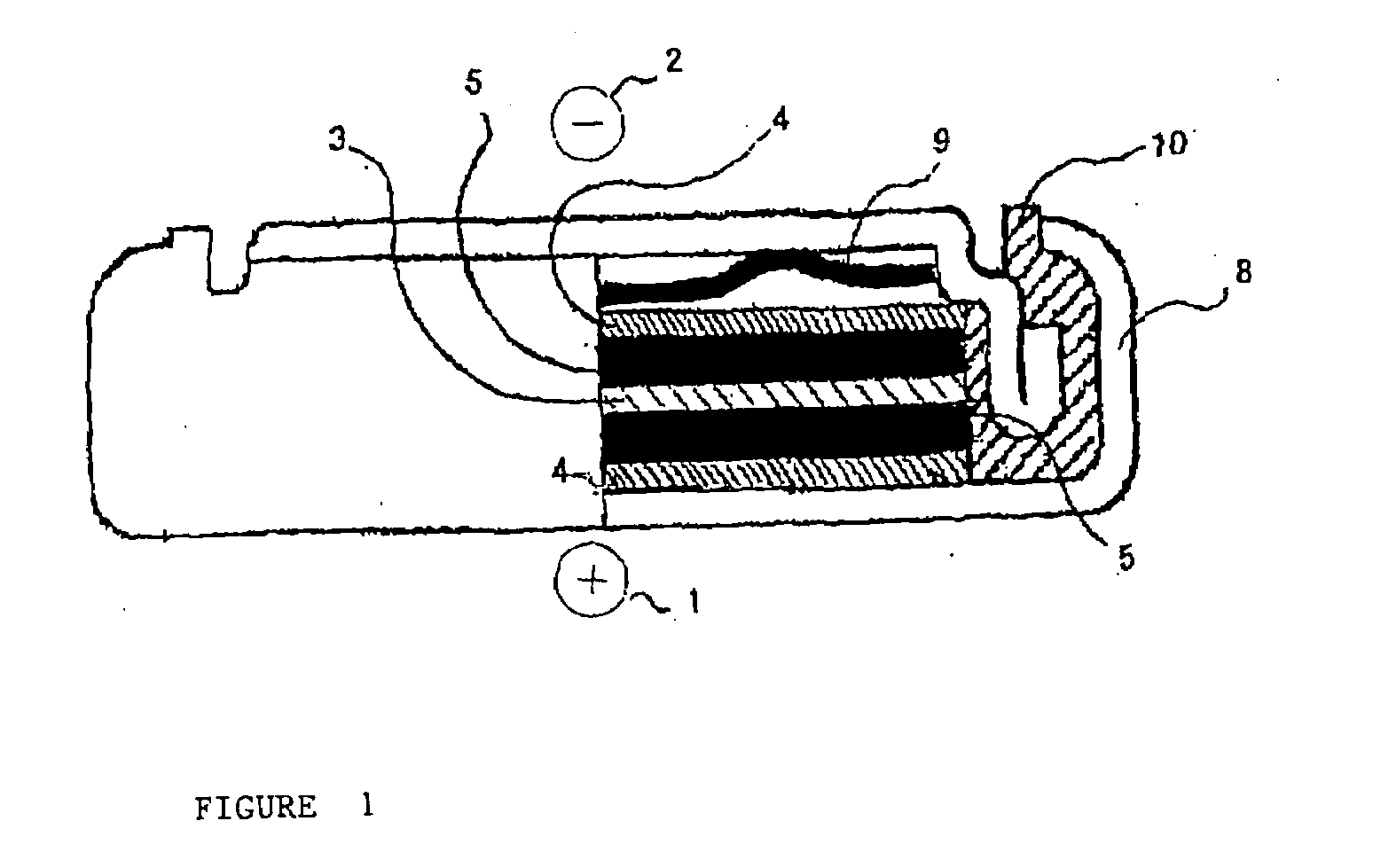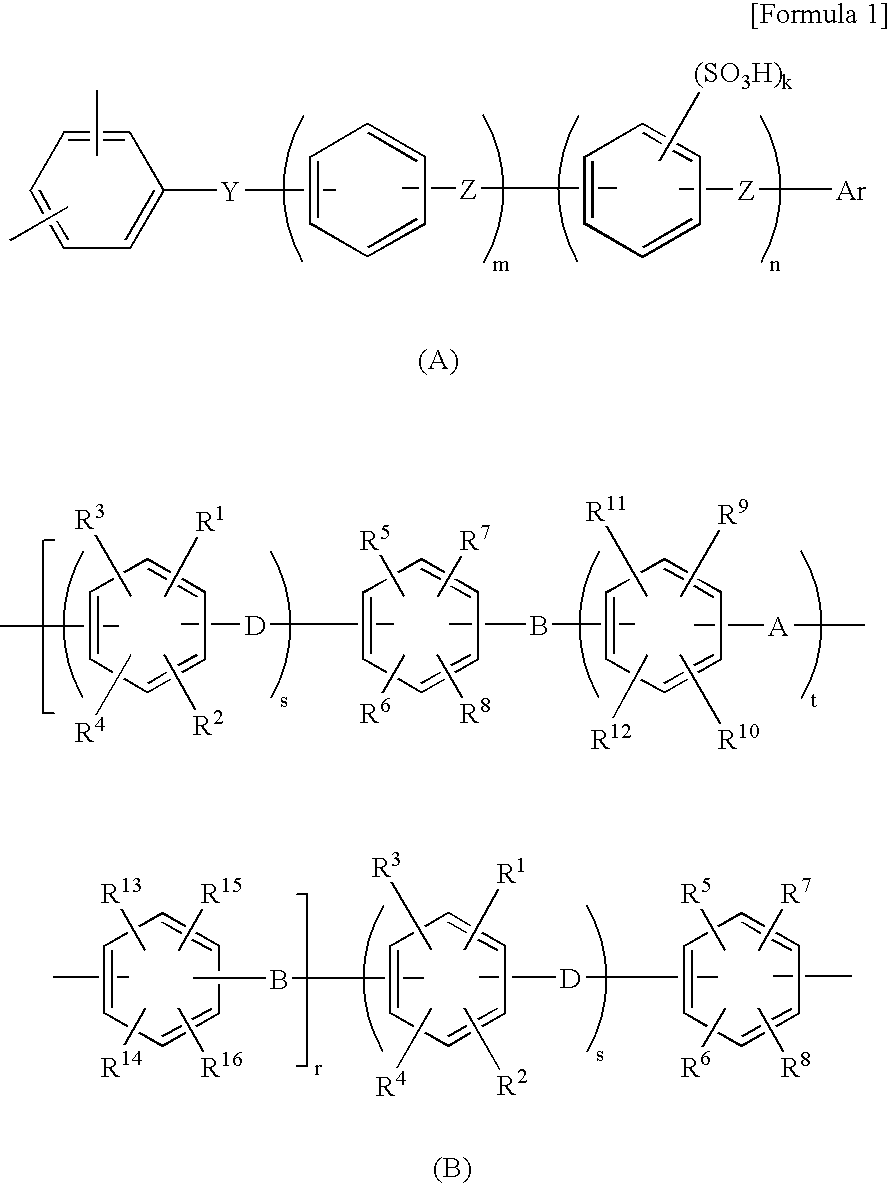Electrochemical capacitor
a technology of electrochemical capacitors and capacitors, applied in the direction of electrolytic capacitors, electrochemical generators, cell components, etc., can solve the problems of resistance loss, low resistance, and low input/output density, and achieve excellent corrosion resistance and output characteristics, good storage capacity
- Summary
- Abstract
- Description
- Claims
- Application Information
AI Technical Summary
Benefits of technology
Problems solved by technology
Method used
Image
Examples
synthesis example 1
Preparation of Oligomer
[0116]A 1-L three-necked flask equipped with a stirrer, a thermometer, a cooling tube, a Dean-Stark tube and a nitrogen inlet with a three-way cock, was charged with 67.3 g (0.20 mol) of 2,2-bis(4-hydroxyphenyl)-1,1,1,3,3,3-hexafluoropropane (bisphenol AF), 60.3 g (0.24 mol) of 4,4′-dichlorobenzophenone (4,4′-DCBP), 71.9 g (0.52 mol) of potassium carbonate, 300 mL of N,N-dimethylacetamide(DMAc) and 150 mL of toluene, and the mixture was heated at 130° C. with stirring in an atmosphere of nitrogen in an oil bath. When the reaction was carried out while the water generated from the reaction was removed out of the system through the Dean-Stark tube by azeotropic distillation with toluene, generation of water almost ceased in approximately 3 hr. The reaction temperature was gradually raised from 130 to 150° C., during which most of the toluene was removed, and the reaction was continued at 150° C. for 10 hr. To the reaction solution was added 10.0 g (0.040 mol) of...
synthesis example 2
Preparation of Polyarylene Copolymer Having a Neopentyl Group as a Protective Group (PolyAB-SO3neo-Pe)
[0119]A 500-mL three-necked flask equipped with a stirrer, a thermometer, a cooling tube, a Dean-Stark tube and a nitrogen inlet with a three-way cock, was charged with 39.58 g (98.64 mmol) of neopentyl 4-[4-(2,5-dichlorobenzoyl)phenoxy]benzenesulfonate (A-SO3neo-Pe), 15.23 g (0.136 mmol) of BCPAF oligomer (Mn=11200), 1.67 g (0.26 mmol) of Ni(PPh3)2Cl2, 10.49 g (4.00 mmol) of PPh3, 0.45 g (0.30 mmol) of NaI, 15.69 g (24.0 mmol) of zinc powder and 129 mL of dried NMP in an atmosphere of nitrogen, and the reaction system was heated with stirring (ultimately heated to 75° C.) to allow to react for 3 hr. The polymerization solution was diluted with 250 mL of THF and stirred for 30 min and then filtered using Celite as a filter aid. The filtrate was poured into a large excess amount of methanol (1500 mL) to solidify the product. The solid was collected by filtration, air-dried, and redis...
synthesis example 3
Synthesis of Hydrophobic Unit
[0122]Into a 1-L three-necked flask equipped with a stirrer, a thermometer, a Dean-stark tube, a nitrogen inlet tube and a cooling tube were weighed 48.8 g (284 mmol) of 2,6-dichlorobenzonitrile, 89.5 g (266 mmol) of 2,2-bis(4-hydroxyphenyl)-1,1,1,3,3,3-hexafluoropropane and 47.8 g (346 mmol) of potassium carbonate. After substitution with nitrogen gas, 346 mL of sulfolane and 173 ml, of toluene were added and the resultant mixture was stirred. The reaction solution was heated under reflux at 150° C. in an oil bath. The water generated by the reaction was trapped into the Dean-Stark tube. After 3 hr, when the generation of water almost ceased, toluene was removed out of the system through the Dean-Stark tube. The reaction temperature was gradually raised to 200° C., stirring was continued for 3 hr, subsequently 9.2 g (53 mmol) of 2,6-dichlorobenzonitrile was added, and the reaction was continued for additional 5 hr.
[0123]The reaction solution was left to...
PUM
 Login to View More
Login to View More Abstract
Description
Claims
Application Information
 Login to View More
Login to View More - R&D
- Intellectual Property
- Life Sciences
- Materials
- Tech Scout
- Unparalleled Data Quality
- Higher Quality Content
- 60% Fewer Hallucinations
Browse by: Latest US Patents, China's latest patents, Technical Efficacy Thesaurus, Application Domain, Technology Topic, Popular Technical Reports.
© 2025 PatSnap. All rights reserved.Legal|Privacy policy|Modern Slavery Act Transparency Statement|Sitemap|About US| Contact US: help@patsnap.com



